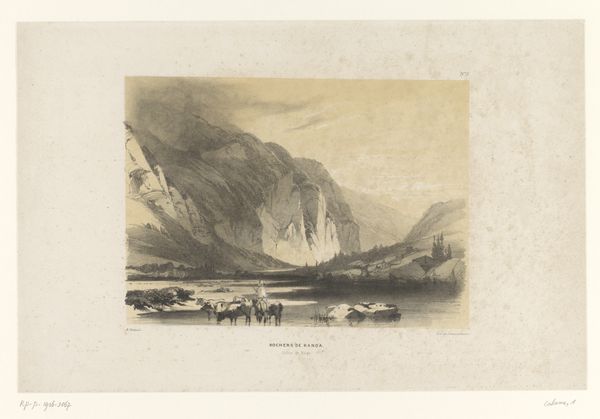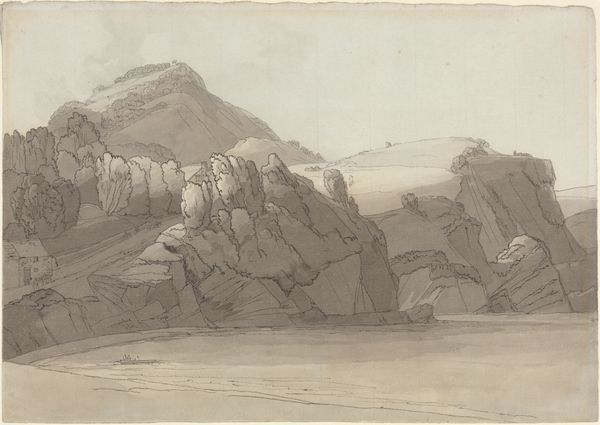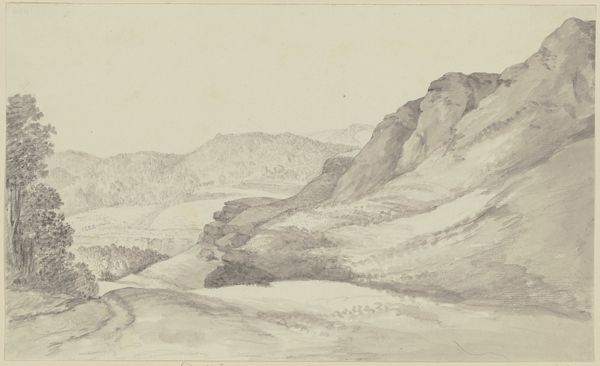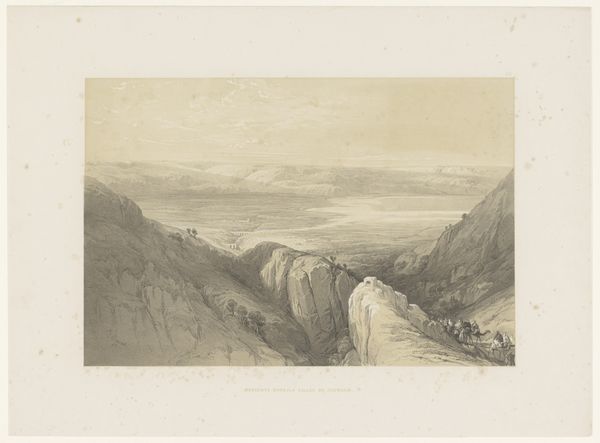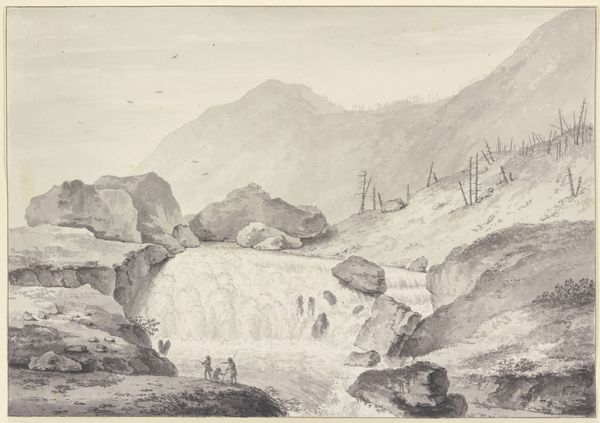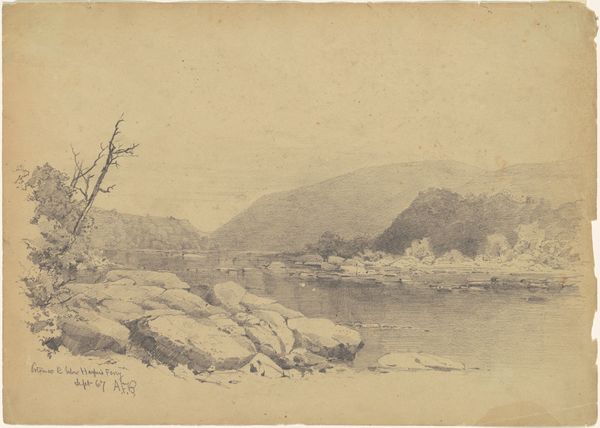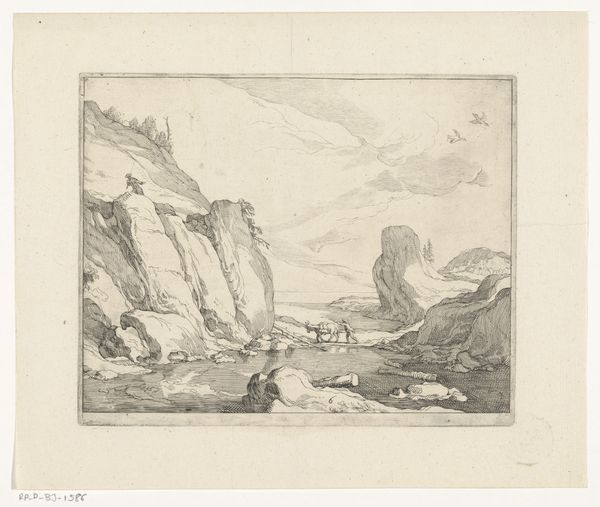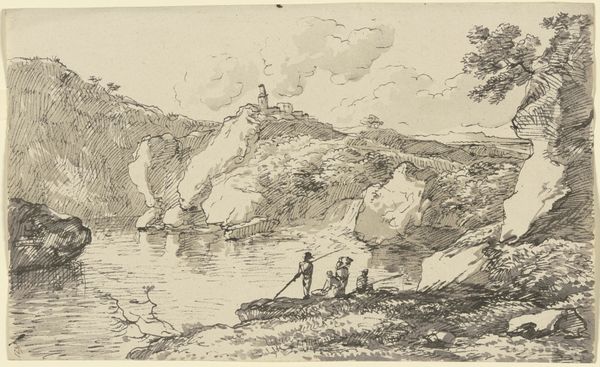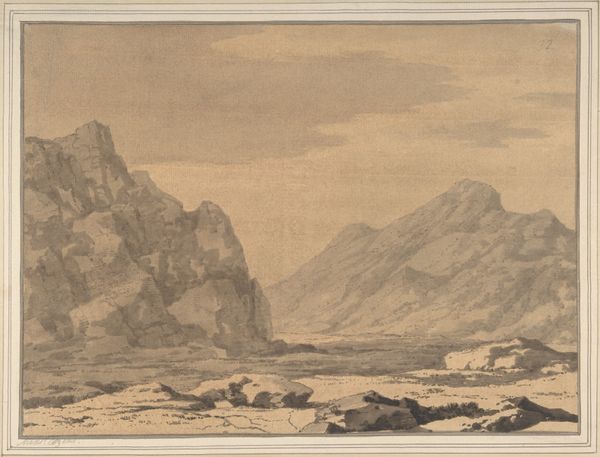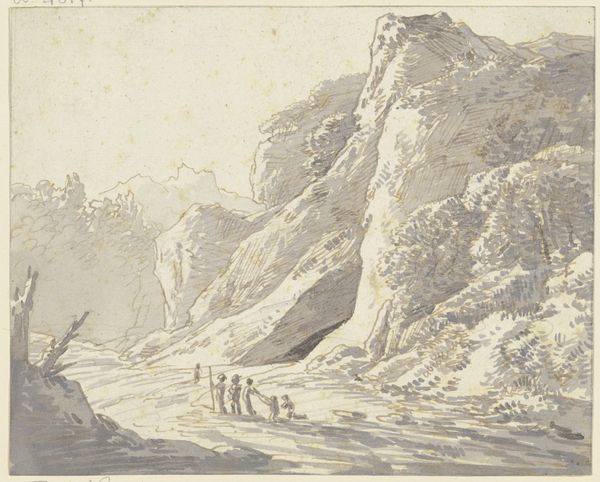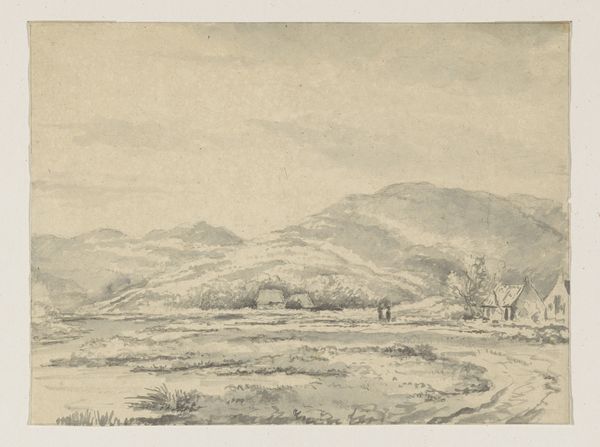
Berglandschap met rivier en een figuur met twee bepakte ezels 1797 - 1870
0:00
0:00
andreasschelfhout
Rijksmuseum
drawing, pencil, graphite
#
drawing
#
pencil sketch
#
landscape
#
figuration
#
pencil drawing
#
romanticism
#
mountain
#
pencil
#
graphite
Dimensions: height 117 mm, width 183 mm
Copyright: Rijks Museum: Open Domain
Editor: This delicate pencil drawing, “Mountain Landscape with River and a Figure with Two Packed Donkeys” by Andreas Schelfhout, made sometime between 1797 and 1870, gives such a sense of scale with so little. The mountains dwarf the figures traversing the landscape. How do you interpret the simple use of line and shading in this piece? Curator: Consider the tools themselves: pencil and paper. This isn't just a representation of a landscape, but a record of labor. How much graphite had to be shaved, how many strokes applied to achieve this atmospheric perspective? Editor: So, the medium itself becomes the message? It’s not just *what* is depicted but *how*? Curator: Precisely. And think about who had access to these materials and the leisure time to create such a piece during the period. Was this made for commerce? Was this produced as a study that would be deployed on a much larger composition or canvas? Editor: That brings up the Romanticism tag. Could this be more than just landscape and figuration? Curator: The Romantic period idealized the untouched natural world, a perspective largely shaped by the socio-economic conditions of the time – industrialization and urbanization, a response against reason for something perceived as natural. Now consider, what does the act of representing it, the means by which this image was made, say about the access to natural beauty that wasn't being afforded to all? Editor: That's a very different perspective from how I initially viewed the artwork. It makes me think about the role of the artist in capturing not just a scene, but the implications of labor and consumption, and their effect on access to nature. Thank you! Curator: The intersection of material production and idealized subjects invites us to challenge our preconceived notions of high art.
Comments
No comments
Be the first to comment and join the conversation on the ultimate creative platform.
